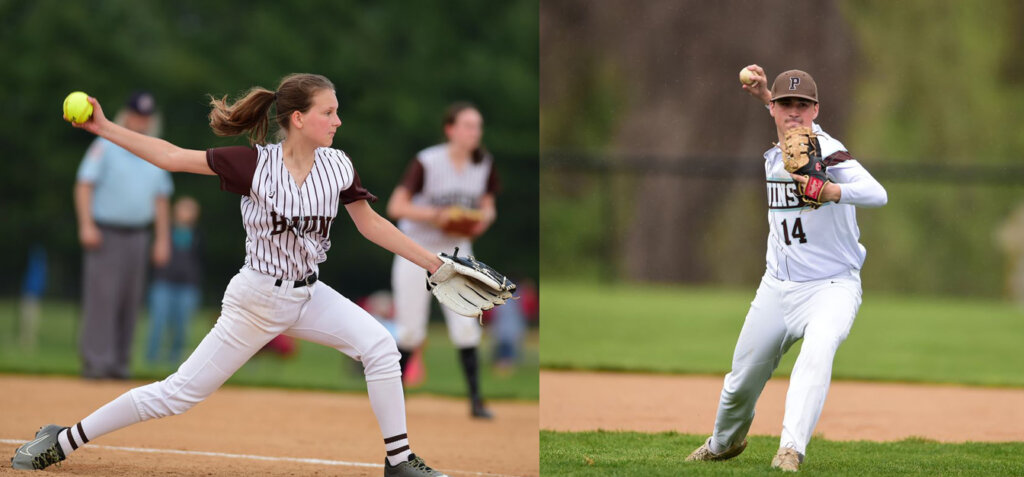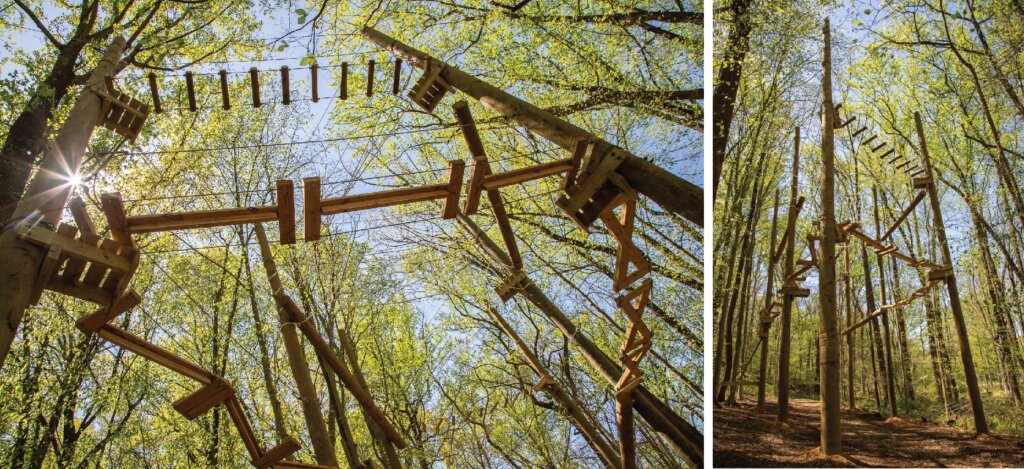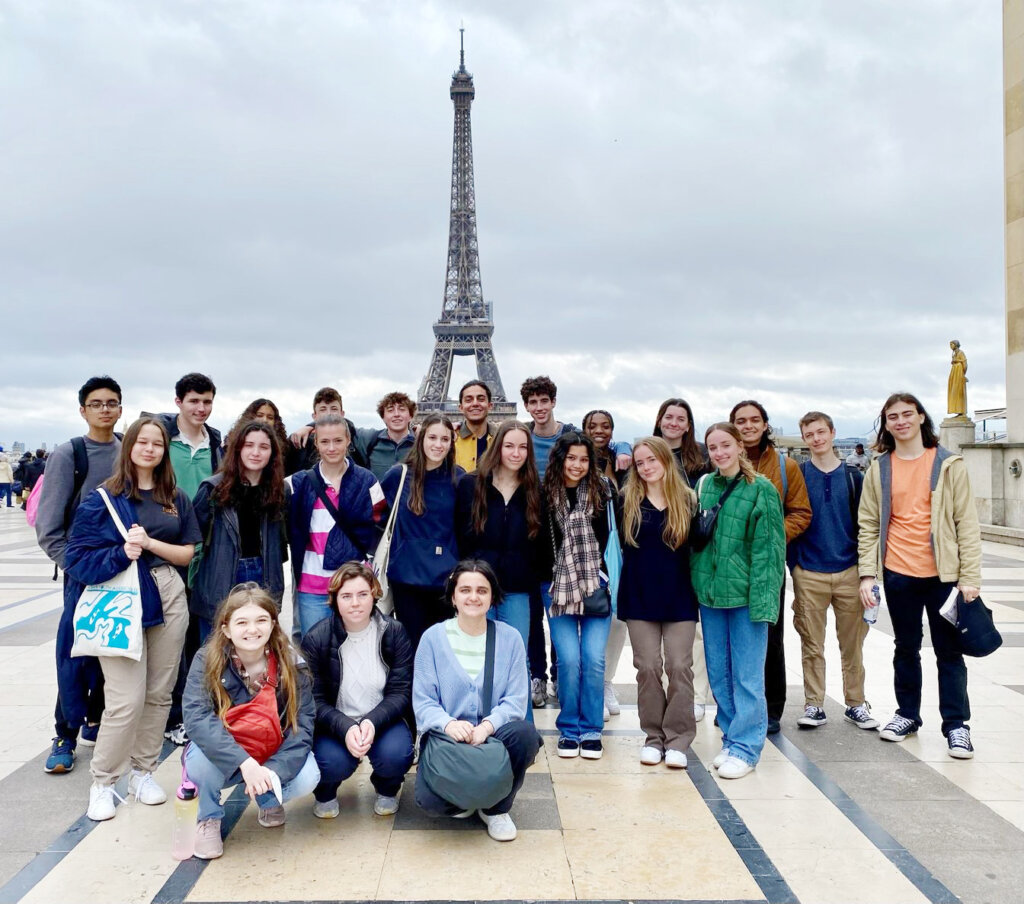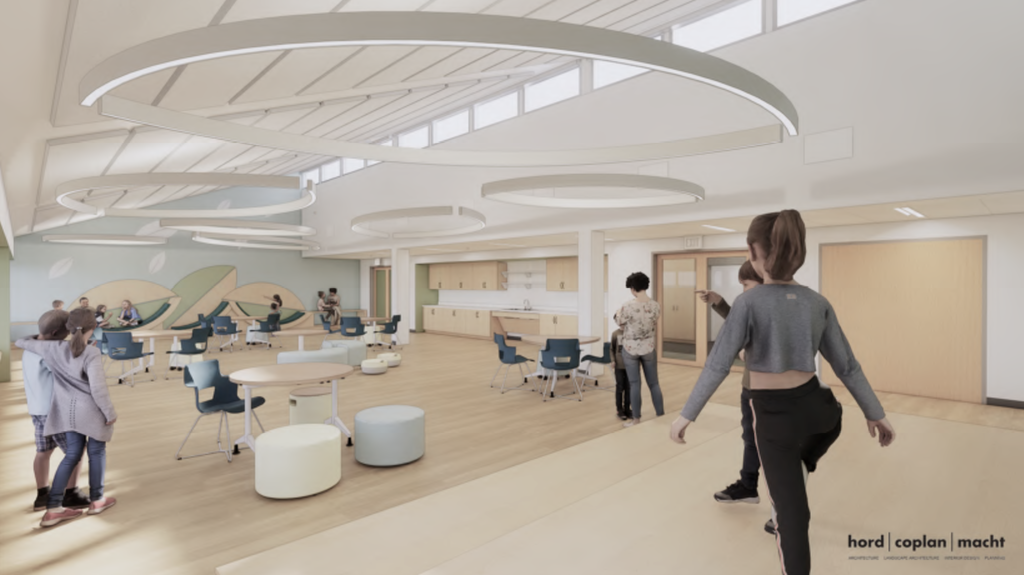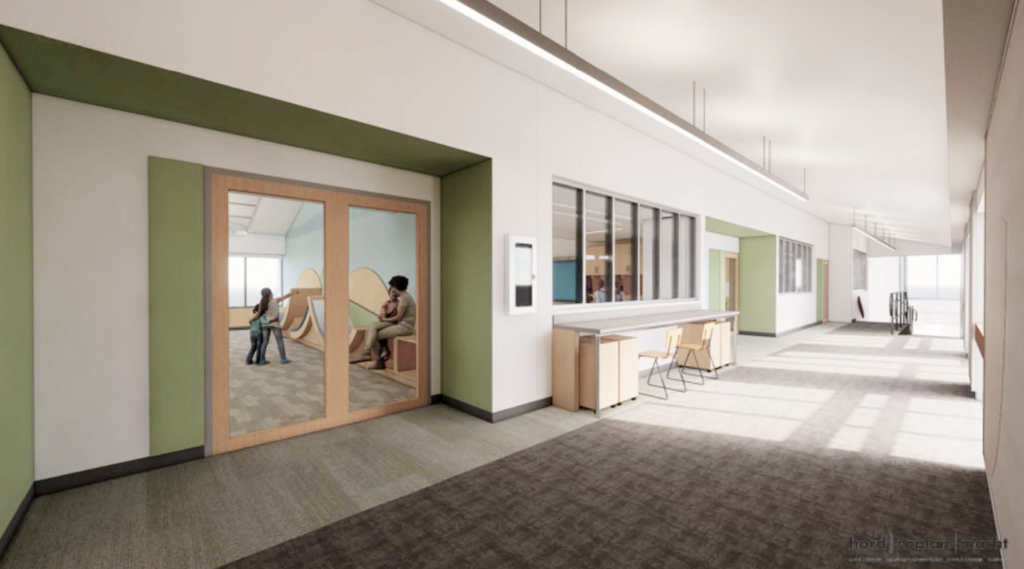Athletics at Our Liberty Heights Campus
A “Real” Gymnasium
AND A TRACK
A growing student population compelled a move to larger quarters in December 1917. The students were ecstatic that the new campus would bring “…a real gymnasium, large beyond belief, and one which should lead the school to a leading position in the athletic world.” [1918 Brownie] Considered state-of-the-art, it had a dirt floor and was unheated.
According to Coach Grim, the move brought about a “new era” for athletics. Increased enrollment meant “sometimes there were as many as six regulars available for scheduled basketball games.” [1918 Brownie] Park graduates celebrated and supported the move. In accordance with their plan of encouraging the growth of athletics…the Alumni have decided to promote an annual field day… to draw the Alumni back to the school and to get them to mingle with the students once more….” [1922 Brownie] Board minutes expressed appreciation to the alumni for pledges of $5,300, which made an athletic field and quarter-mile track possible. “[F]ew schools have alumni who do as much as ours have done…we are deeply grateful for their great boon to athletics.” [1923 Board Minutes]
At the dedication in 1925, Headmaster John Leydon thanked the students for “rolling the track, planting the banks, and digging the jumping pits….” Dr. Hans Froelicher, representing the Board of Trustees, noted, “The field represents great sacrifice, energetic action, and cooperation – virtues which should be characteristics of every Park School student.”
To the Coaches: You, who have helped us, Through games won and lost… You, with your patience, Guiding us toward perfection, Training us in sportsmanship… We humbly thank you.
1951 Brownie
Football! Field Hockey!
A BIGGER SCHOOL, MORE TEAMS
A larger enrollment made it possible to expand the variety of sports offered to girls and boys. In 1921, soccer and football – “a weight team, ninety-five pounds as the average, and all the fellows in the School of approximately that weight were out for it” – were introduced. [1921 Brownie]
In 1922, the girls started playing field hockey, which “as a game, has many advantages. It develops wind and endurance. The other sex often sneers at a girls’ basket-ball game, but what blood-thirsty man could desire anything rougher than a hard-fought game of hockey?” [1922 Brownie] The team won the Baltimore School Division of the United States Field Hockey Association championship that year. In addition, five students were named to the All-Baltimore Scholastic Team and played in the National Hockey Tournament in Philadelphia.
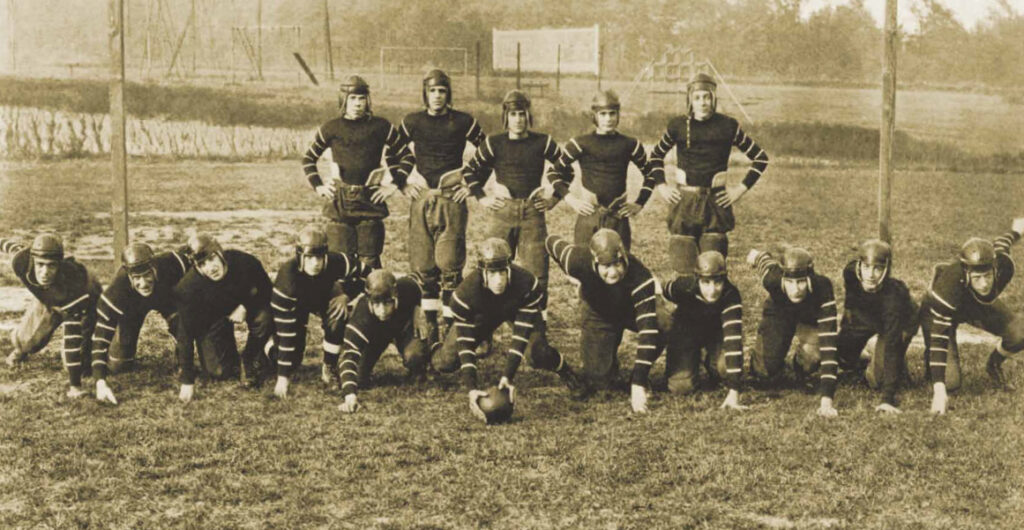
Mr. Tom, Mr. Mal & Mott
LEGENDARY COACHES
The arrival of Harrison E. “Mr. Tom” Tompkins in 1922 and Martha “Mott” Hunt 14 years later are significant milestones in the history of athletics and academics at Park. For more than 25 years, Mr. Tom coached boys’ basketball, soccer, football, and lacrosse. Over the course of his 47-year tenure, he taught Lower and Upper School girls and boys in shop, industrial arts, mechanical drawing, biology, arithmetic, and stage crafts; he was a class advisor, head of maintenance, and purchasing agent. Mott’s duties from 1935 through the 1950s were similarly diverse and included drilling girls in the fundamentals of field hockey, basketball, and lacrosse, supervising the cafeteria staff, ordering supplies, advising the cheerleading squad, and providing college guidance.
Together, they motivated almost six decades of athletes to strive and achieve far beyond what the school’s small population and modest facilities might otherwise have allowed. The 1945 Brownie editors wrote to these two coaches: “To you who have taught us to play the game, we owe our gratitude for the strong bodies, clear minds, understanding of sportsmanship, and hours of pleasure that we have gained on the athletic field.”
In 1930, Mr. Tom hired C. Gardner “Mr. Mal” Mallonee to teach mathematics and to coach boys’ soccer, basketball, and lacrosse. The Johns Hopkins University graduate had been an All-American football and lacrosse player and had competed in a 1928 Summer Olympics lacrosse demonstration tournament in Amsterdam. It was Mallonee who, convinced that the numbers and size of the boys in Upper School were not optimal for winning football, ended the sport and turned his energies to building a strong soccer team.
He married fellow Park teacher Esther Felter in a ceremony on Thanksgiving Day in 1932 to which all Park faculty and students were invited. Though he returned to Hopkins as a coach and men’s athletics director in 1935, the Mallonee family continued to be a dominant force in Park athletics. With Mr. Mal’s departure, Mr. Tom took over coaching boys’ teams.
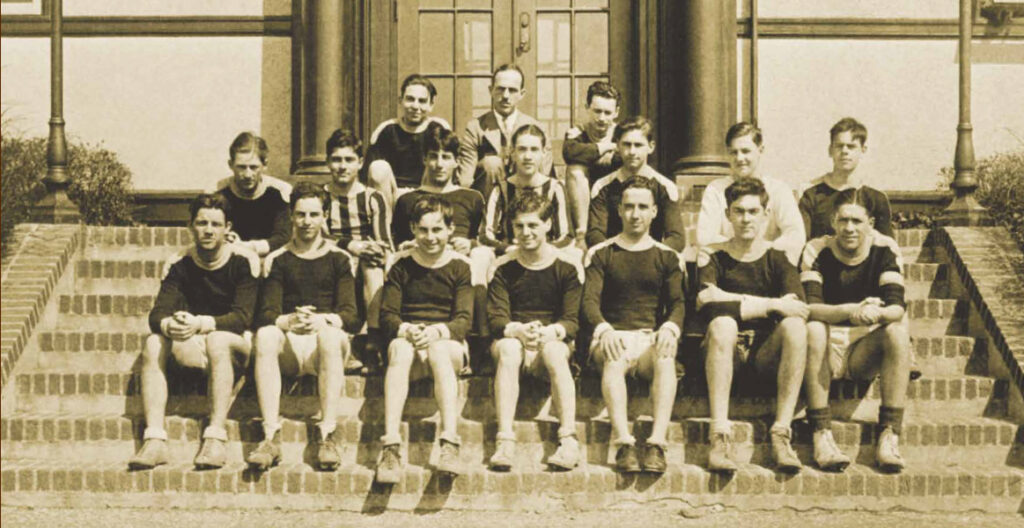
The Formula for the ideal coach:…a classroom teacher, one who is a first-class athlete himself, yet sympathetic toward those not equally gifted, one who teaches you to take the knocks and to play fairly….The formula for the perfect coach: Mr. Mallonee.
1931 Brownie
/col
More Students
MORE SPACE, MORE TEAMS
In the late 1920s, the female Varsity players enjoyed great success under the direction of Coach Berniece Ryan – they won five consecutive Baltimore City field hockey championships. In 1933, “With high hopes and a peculiar feeling of superiority, the girls this spring decided to leave home their volley ball rompers and take up…lacrosse. Twenty sticks were procured from their annoyed brothers and the Triangle Sports Shops, as Ryan proceeded to teach her squad the theory of ‘doing the maximum damage to the other fellow while not getting hurt yourself.’” [1933 Brownie]
Beginning in the 1940s, Park had enough students to field Varsity and Junior Varsity teams, and alumni began returning to school as assistant coaches. Championship teams brought notice for star players who were named to All-City and State Teams. Basketball remained the favored sport, and in the 1945 boys’ basketball playoffs, “underdog Park played the title role in ‘The Giant Killer’ and took seeded Friends to the taxidermist in the playoffs” before losing in the championship game. [1945 Brownie] In 1957, enterprising girls, with the unanimous support of the student council and under Mott’s guidance, started a cheerleading squad. “Throughout the entire school they have stimulated enthusiasm and spirit. Cheering has inspired the teams to more victories.” [1957 Brownie]
In 1956, Park became the first area independent school to admit African Americans. The school’s newly integrated teams had to confront incidents of racism on the fields and courts of some of their opponents. Coaches and players alike dealt with these episodes with integrity and a unified commitment to diversity.
Park’s deteriorating athletic facilities were hardly commensurate with the trajectory of victory. The Evening Sun reported in 1950, “Most difficult task of the season is faced by Park School…. It recently lost…[several] weeks of practice and games to warm weather, which caused its composition floor to sweat daily….” The gym was not the only building in desperate need of repair. A 1955 appraisal of the Liberty Heights property stated, “The Old Building constructed in 1916 was, at the time of its construction, the latest word in school buildings, although by modern standards it has many inadequacies… which cannot be improved because of [numerous flaws]…and other functional difficulties.” It was time, once again, to relocate.

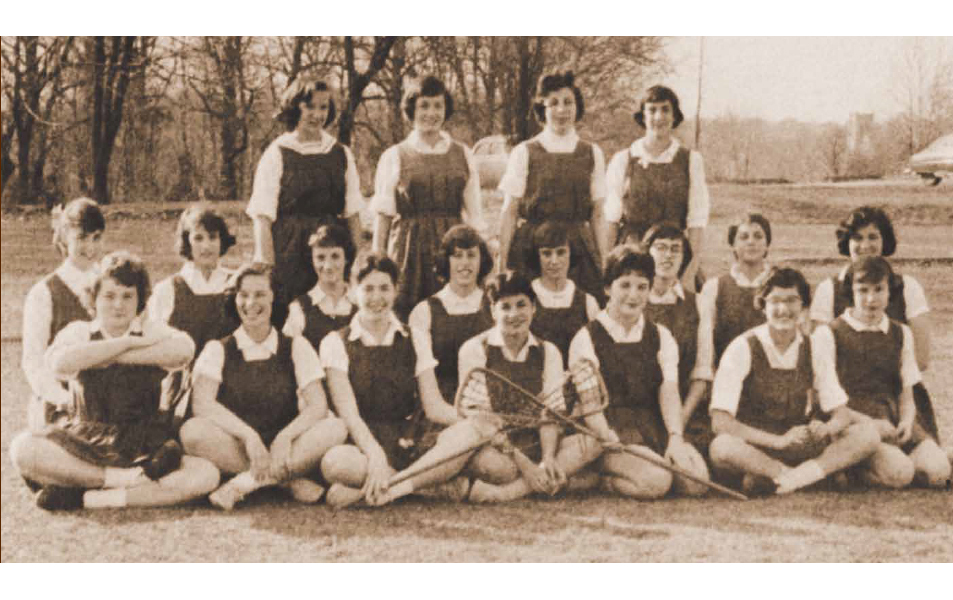
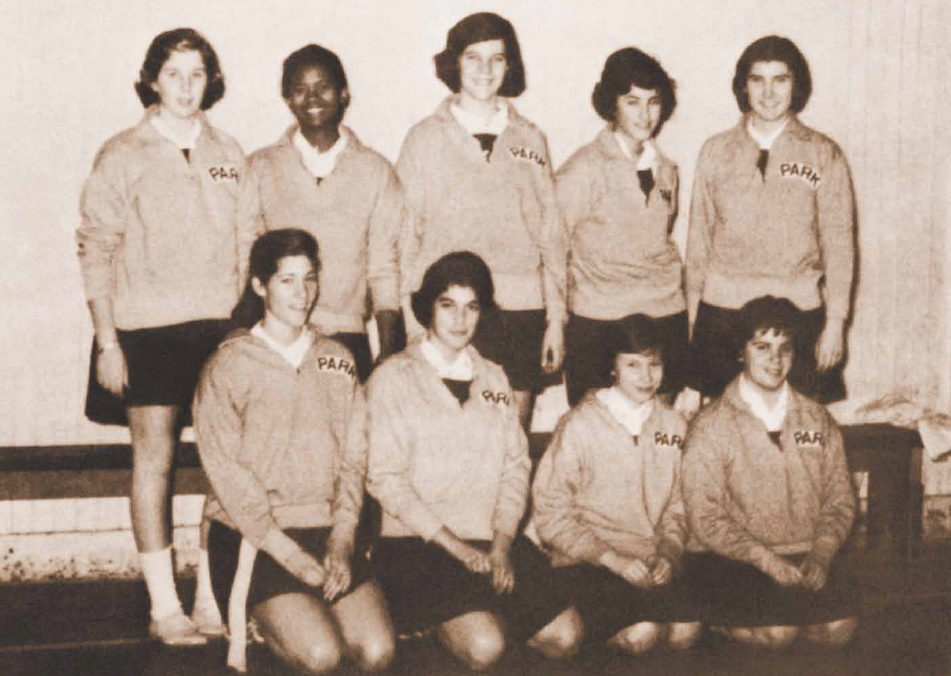
A “Real” Gymnasium
AND A TRACK
A growing student population compelled a move to larger quarters in December 1917. The students were ecstatic that the new campus would bring “…a real gymnasium, large beyond belief, and one which should lead the school to a leading position in the athletic world.” [1918 Brownie] Considered state-of-the-art, it had a dirt floor and was unheated.
According to Coach Grim, the move brought about a “new era” for athletics. Increased enrollment meant “sometimes there were as many as six regulars available for scheduled basketball games.” [1918 Brownie] Park graduates celebrated and supported the move. In accordance with their plan of encouraging the growth of athletics…the Alumni have decided to promote an annual field day… to draw the Alumni back to the school and to get them to mingle with the students once more….” [1922 Brownie] Board minutes expressed appreciation to the alumni for pledges of $5,300, which made an athletic field and quarter-mile track possible. “[F]ew schools have alumni who do as much as ours have done…we are deeply grateful for their great boon to athletics.” [1923 Board Minutes]
At the dedication in 1925, Headmaster John Leydon thanked the students for “rolling the track, planting the banks, and digging the jumping pits….” Dr. Hans Froelicher, representing the Board of Trustees, noted, “The field represents great sacrifice, energetic action, and cooperation – virtues which should be characteristics of every Park School student.”
To the Coaches: You, who have helped us, Through games won and lost… You, with your patience, Guiding us toward perfection, Training us in sportsmanship… We humbly thank you.
1951 Brownie
Football! Field Hockey!
A BIGGER SCHOOL, MORE TEAMS
A larger enrollment made it possible to expand the variety of sports offered to girls and boys. In 1921, soccer and football – “a weight team, ninety-five pounds as the average, and all the fellows in the School of approximately that weight were out for it” – were introduced. [1921 Brownie]
In 1922, the girls started playing field hockey, which “as a game, has many advantages. It develops wind and endurance. The other sex often sneers at a girls’ basket-ball game, but what blood-thirsty man could desire anything rougher than a hard-fought game of hockey?” [1922 Brownie] The team won the Baltimore School Division of the United States Field Hockey Association championship that year. In addition, five students were named to the All-Baltimore Scholastic Team and played in the National Hockey Tournament in Philadelphia.
Mr. Tom, Mr. Mal & Mott
LEGENDARY COACHES
The arrival of Harrison E. “Mr. Tom” Tompkins in 1922 and Martha “Mott” Hunt 14 years later are significant milestones in the history of athletics and academics at Park. For more than 25 years, Mr. Tom coached boys’ basketball, soccer, football, and lacrosse. Over the course of his 47-year tenure, he taught Lower and Upper School girls and boys in shop, industrial arts, mechanical drawing, biology, arithmetic, and stage crafts; he was a class advisor, head of maintenance, and purchasing agent. Mott’s duties from 1935 through the 1950s were similarly diverse and included drilling girls in the fundamentals of field hockey, basketball, and lacrosse, supervising the cafeteria staff, ordering supplies, advising the cheerleading squad, and providing college guidance.
Together, they motivated almost six decades of athletes to strive and achieve far beyond what the school’s small population and modest facilities might otherwise have allowed. The 1945 Brownie editors wrote to these two coaches: “To you who have taught us to play the game, we owe our gratitude for the strong bodies, clear minds, understanding of sportsmanship, and hours of pleasure that we have gained on the athletic field.”
In 1930, Mr. Tom hired C. Gardner “Mr. Mal” Mallonee to teach mathematics and to coach boys’ soccer, basketball, and lacrosse. The Johns Hopkins University graduate had been an All-American football and lacrosse player and had competed in a 1928 Summer Olympics lacrosse demonstration tournament in Amsterdam. It was Mallonee who, convinced that the numbers and size of the boys in Upper School were not optimal for winning football, ended the sport and turned his energies to building a strong soccer team.
He married fellow Park teacher Esther Felter in a ceremony on Thanksgiving Day in 1932 to which all Park faculty and students were invited. Though he returned to Hopkins as a coach and men’s athletics director in 1935, the Mallonee family continued to be a dominant force in Park athletics. With Mr. Mal’s departure, Mr. Tom took over coaching boys’ teams.
The Formula for the ideal coach:…a classroom teacher, one who is a first-class athlete himself, yet sympathetic toward those not equally gifted, one who teaches you to take the knocks and to play fairly….The formula for the perfect coach: Mr. Mallonee.
1931 Brownie
More Students
MORE SPACE, MORE TEAMS
In the late 1920s, the female Varsity players enjoyed great success under the direction of Coach Berniece Ryan – they won five consecutive Baltimore City field hockey championships. In 1933, “With high hopes and a peculiar feeling of superiority, the girls this spring decided to leave home their volley ball rompers and take up…lacrosse. Twenty sticks were procured from their annoyed brothers and the Triangle Sports Shops, as Ryan proceeded to teach her squad the theory of ‘doing the maximum damage to the other fellow while not getting hurt yourself.’” [1933 Brownie]
Beginning in the 1940s, Park had enough students to field Varsity and Junior Varsity teams, and alumni began returning to school as assistant coaches. Championship teams brought notice for star players who were named to All-City and State Teams. Basketball remained the favored sport, and in the 1945 boys’ basketball playoffs, “underdog Park played the title role in ‘The Giant Killer’ and took seeded Friends to the taxidermist in the playoffs” before losing in the championship game. [1945 Brownie] In 1957, enterprising girls, with the unanimous support of the student council and under Mott’s guidance, started a cheerleading squad. “Throughout the entire school they have stimulated enthusiasm and spirit. Cheering has inspired the teams to more victories.” [1957 Brownie]
In 1956, Park became the first area independent school to admit African Americans. The school’s newly integrated teams had to confront incidents of racism on the fields and courts of some of their opponents. Coaches and players alike dealt with these episodes with integrity and a unified commitment to diversity.
Park’s deteriorating athletic facilities were hardly commensurate with the trajectory of victory. The Evening Sun reported in 1950, “Most difficult task of the season is faced by Park School…. It recently lost…[several] weeks of practice and games to warm weather, which caused its composition floor to sweat daily….” The gym was not the only building in desperate need of repair. A 1955 appraisal of the Liberty Heights property stated, “The Old Building constructed in 1916 was, at the time of its construction, the latest word in school buildings, although by modern standards it has many inadequacies… which cannot be improved because of [numerous flaws]…and other functional difficulties.” It was time, once again, to relocate.

